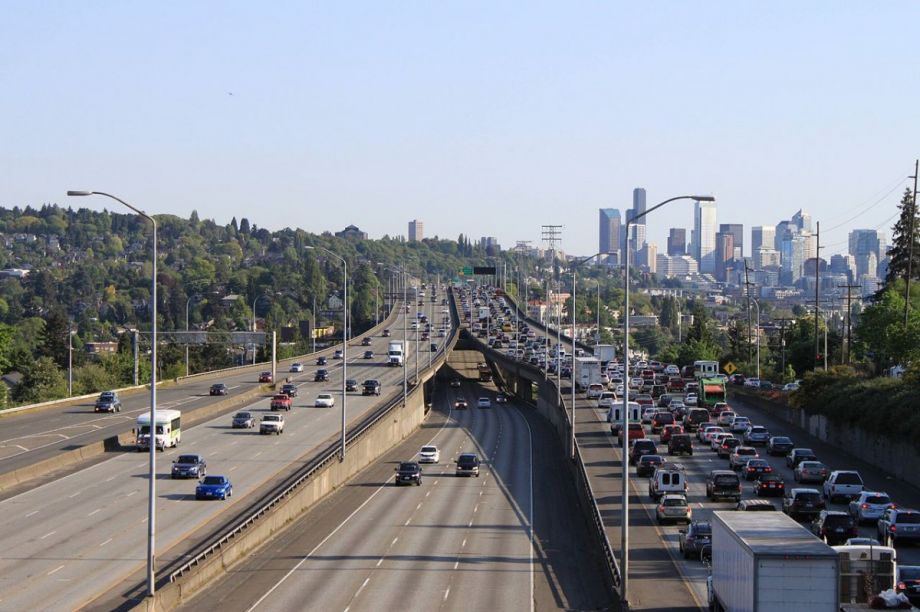Sometimes it feels like growth is all anyone in Seattle talks about anymore. The city’s exploding population has been a centerpiece of this year’s city council race. Construction cranes dot the horizon in just about every direction you look. Rarely an evening rush hour goes by without the Google traffic map filling up with the dark-red lines of gridlocked streets. Depending on whom you ask, these are either exciting times in a burgeoning city or a harbinger of a city that will soon be a homogenous playground for the rich.
The Downtown Seattle Association’s recently released 2015 Development Guide helps quantify the growth (at least in the city core, which they define as Downtown, Belltown, South Lake Union, and parts of Capitol Hill and First Hill).
The report says DSA, which is a member-based nonprofit focusing on downtown improvements, expects 36 projects to be completed by the end of the year, the largest number in the past decade. The majority of those new projects are residential. Downtown is getting 3,487 new rental units by the end of this year and another 8,500 by the end of 2018. As of June, there is also 7.1 million square feet of new office space. Seattle’s been growing by 14,000-18,000 residents a year for the last few years and clearly developers think many more are on their way.
“There’s this historic boom going on, and it’s really great for the city in the long term, but there’s a lot of short-term pain,” says Seattle Department of Transportation Scott Kubly.
Figuring out how to deal with some of that short-term pain — namely how people get around on streets built for a much smaller population — falls on Kubly’s department. He says soothing, in part, is going to require getting people a lot more people out of single occupancy vehicles.
“We’re geographically constrained in terms of auto capacity we can add to the network. If we’re going to continue to grow, we need to use our streets more efficiently,” Kubly explains.
DSA’s report comes on the heels of the release of Seattle’s draft 2035 comprehensive plan, which outlines the city’s 20-year strategy for land use, parks, utilities, housing, transportation and more in the face of 120,000 additional residents projected to move here in the coming years.
A big piece of the plan’s transportation strategy is to continue shifting people’s mode share choices away from solo driving and toward carpooling, biking, walking, transit and car-share, especially in the downtown core. It sets the goal of reducing solo driving for downtown work trips to 25 percent of mode share and reducing it to 10 percent of non-work trips by 2035.
Right now solo driving represents about 31 percent of downtown commuting. That’s equivalent to a little over 70,000 solo drivers.
“Broadly speaking, we can handle about 70,000 people commuting by automobile,” says Kubly. “If we’re going to keep the city moving it’s going to necessitate investing in transit, investing in bike infrastructure, [and we] need to figure out how to optimize our signals so the network operates as efficiently as possible without sacrificing safety.”
SDOT is in the early stages of designing a center-city protected bike lane network that will expand on the existing 2nd Avenue protected bike lane. Currently that’s the only “next-generation” bike infrastructure downtown (and even it is a work-in-progress). Safe north-south and east-west bike connections through downtown would be a huge boon for existing and would-be bicyclists.
Kubly says they’re also working to improve safety for walkers with things like no right on reds at particularly busy intersections, some all-way crossings and dropping the speed limit to 25 mph across downtown. “With people living downtown and housing being close to work, people are going to want to [walk]. It’s just naturally the fastest, most pleasant way to get around. These things we’re doing or will do in the near future will improve walking.”
For those who can’t or won’t bike and walk, Kubly points to last fall’s voter-approved Prop 1, which increased some bus service downtown. He also says SDOT is thinking about ways to better utilize ride-share and ride-hiring services like Car2Go, Uber, Lyft and the soon-to-launch DriveNow.
“How do we take advantage of this new capacity that’s coming online?” asks Kubly. “Here’s a huge opportunity because there’s a bunch of empty seats that could be used.”
Granted, much of SDOT’s vision for Seattle hinges on whether voters pass a new, $900 million transportation levy this November.
“If the next levy doesn’t pass we’re going to have to really rethink how we fund transportation and how we prioritize our work,” says Kubly. “There’s going to be a lot of really hard questions we’d have to ask about do we prioritize maintenance, do we prioritize safety?”
The Works is made possible with the support of the Surdna Foundation.

Josh Cohen is Crosscut’s city reporter covering Seattle government, politics and the issues that shape life in the city.
Follow Josh .(JavaScript must be enabled to view this email address)



_600_350_80_s_c1.jpg)













